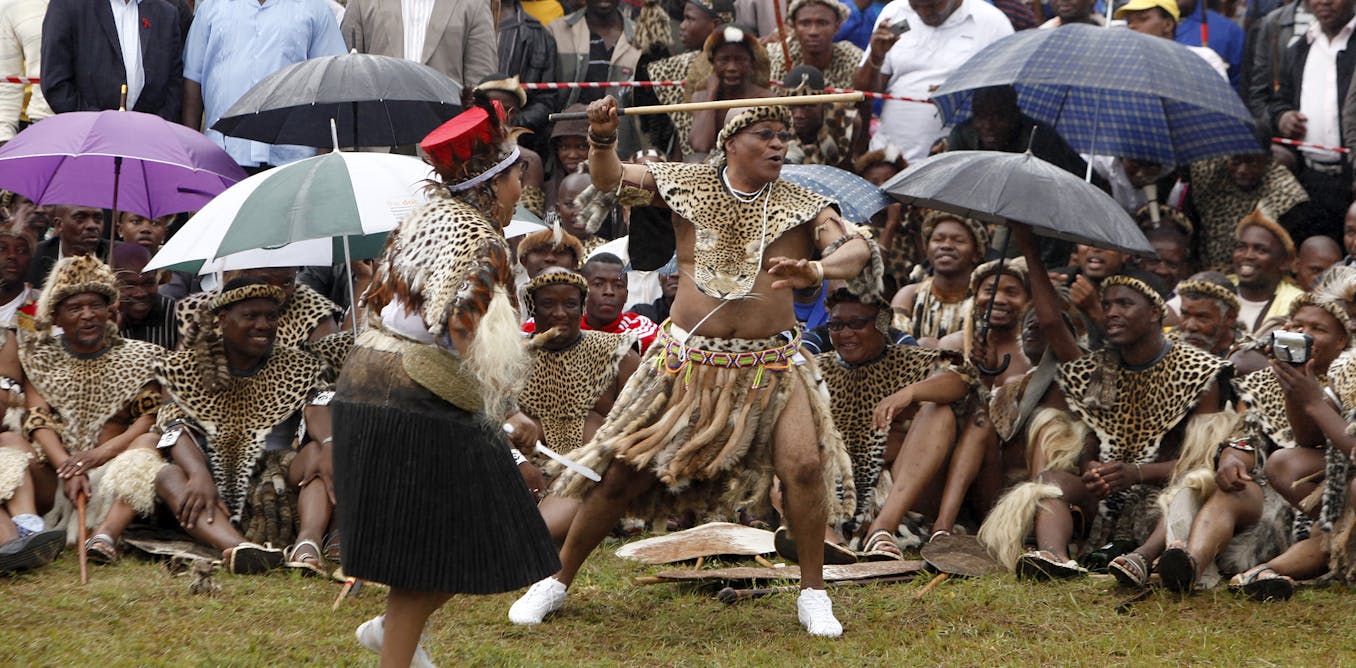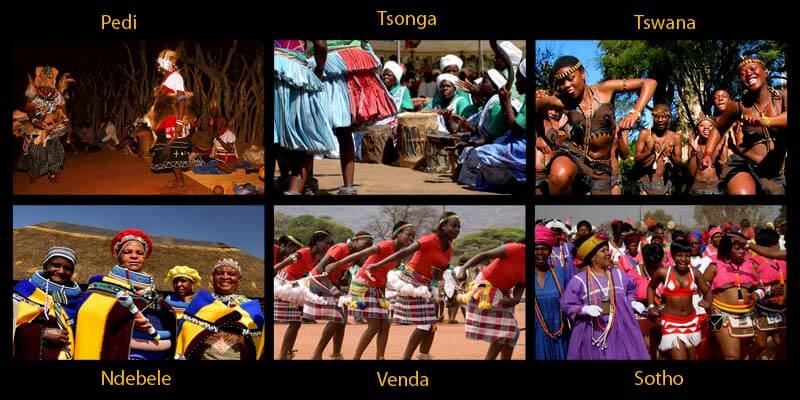The smart Trick of South African Culture Today That Nobody is Talking About
The smart Trick of South African Culture Today That Nobody is Talking About
Blog Article
The Best Strategy To Use For South African Culture Today
Table of ContentsThe Basic Principles Of South African Culture Today Facts About South African Culture Today UncoveredThe 9-Second Trick For South African Culture TodaySouth African Culture Today Things To Know Before You Get ThisSome Known Incorrect Statements About South African Culture Today More About South African Culture Today
This adheres to with singing and drum beating. The new bride and groom after that meet the seniors and chat regarding the importance of their union. A matter of value in Zambian villages is the passing away of liked ones. All participants of the town placed money, effort and time together for the funeral of the deceased.Music and dancing is a really vital aspect of the Zambian society. The different tribal systems have their own dancing kinds; however, makishi is usual amongst all people.
Excitement About South African Culture Today
When it comes to songs, drums are utilized one of the most, with a variety of drumming ceremonies. In Zambia, bulk of individuals are Christian; Protestant and Roman Catholic. There are tiny groups of Muslims and Hindus, with the remainder following local indigenous tribal ideas.

South African heritage and society is exceptionally diverse, and contains several groups of individuals that each have their own customs and ideas. Having such a diversity of individuals and societies is what makes South Africa so one-of-a-kind. In truth sense of the phrase, we are a rainbow country.
South Africa has approximately three hundred thousand Portuguese individuals staying in it. Making it the 7th on the checklist of nations with one of the most Portuguese individuals in it beyond Portugal. Portuguese is not just a society, but it is likewise a language and a nationality. Portuguese individuals stem from the country of Portugal in Europe, nonetheless, as a result of Portugal (like several other nations in Europe) discovering the world and conquering other countries during the 15th 20th centuries, South Africa has what we call Portuguese South African's living in it.
Top Guidelines Of South African Culture Today
Among the noticeable attributes of the topography is a plateau that covers almost two thirds of the facility of the country. The plateau complex rises towards the southeast, where it climaxes in the Drakensberg range, component of an escarpment that separates the plateau from the coastal areas. The Drakensburg consists of Sparkling wine Castle, the greatest height in the country.
The region north of the Witwatersrand, called the bushveld, slopes downward from eastern to west toward the Limpopo River, which creates the worldwide border. The western area of the plateau, the middleveld, also descends in the direction of the west and varies in elevation between the highveld and bushveld. In between the Drakensburg and the eastern and southerly coastline, the land descends to the sea.
Nearer the coast there is a low-lying plain called the eastern lowveld. Southwest of the plateau the country ends up being progressively more dry, offering means to the hostile desert of the Great Karroo, approached the east by the reduced, better watered plateau of the Little Karroo. Dividing the completely dry southern inside from the sandy littoral of the southerly coast and West Cape is one more variety, the Langeberg.
South African Culture Today - An Overview
The nation's racially, ethnically, and politically check my blog divided history has produced national and subnational symbols that still function as signs of the nation, and others icons that are approved just by specific groups. The monuments to white settler conquest and political supremacy, such as the Afrikaner Voortrekker ("leader") Monolith in Pretoria and the Rhodes Monolith recognizing the British colonial realm building contractor and Cape head of state Cecil Rhodes, stay sectarian signs.
The first contemporary residents were the San ("bushman") hunter-gatherers and the Khoi ("Hottentot") individuals, who herded animals (South African culture today). The San might have existed for countless years and left evidence of their presence in thousands of old cavern paintings ("rock art"). Bantu-speaking clans that were the ancestors of the Nguni (today's amaZulu, amaXhosa, amaSwazi, and vaTsonga individuals) and Tswana-Sotho language groups (today's Batswana and Southern and Northern Basotho) migrated below eastern Africa as early as the fifteenth century

Both former republics of the Orange Free State and Transvaal (South African Republic) were established by Afrikaner settlers who defeated and dispossessed the Basotho and Batswana. Lesotho would certainly have been forcibly incorporated right into the Orange Free State without the extension of British security in 1869. The best unification of the country arised from the South African Battle (18991902) in between the British and the 2 Afrikaner republics, which decreased the nation to destroy at the beginning of the twentieth century.
Afrikaners traditionally considered themselves the just true South Africans and, while providing complete citizenship to all residents of European descent, denied that status to individuals of shade until the democratic transition of 1994. British South Africans keep a sense of cultural and social connection to Great Britain without damaging their identification as South Africans.
South African Culture Today Fundamentals Explained
The diversity and fragmentation within ethnic groups and the balance of tensions between those groups throughout the twentieth century protected against interethnic civil dispute. While intergroup tensions over resources, privileges, and political prominence stay, those conflicts are as most likely to match Zulu against Zulu as Zulu versus Xhosa or African against Afrikaner.
From colonial India, British merchants and administrators brought the curved steel ornamental roofs and slim shoelace job pillars that still epitomize the terraces of homes in communities and cities look what i found throughout the nation. Residences of praise add an essential architectural element even in the smallest communities. In enhancement to the skyrocketing steeples and timeless stonework of Afrikaans Dutch Reformed churches, Anglican churches, synagogues, mosques, and Hindu temples provide range to the religious building scene.

Butchering and the developing of traditional cereal beer are vital in protecting the involvement and goodwill of the ancestors who are thought about the guardians of good fortune, prosperity, and health. Indian areas keep their indigenous culinary traditions and use them on Islamic and Hindu routine and ritualistic events. Afrikaners and Coloured people collect at weekend breaks and special celebrations at multifamily bbqs called braais, where area bonds are reinforced.
Because this was the primary financial business of both black Africans and white colonists, problem in between those teams fixated the ownership of grazing land and livestock. In 1867, the biggest diamond deposits on the planet were found at Kimberley in the west central location. The wealth from those areas helped fund the exploitation of the best gold reef worldwide, which was found on the Witwatersrand in 1886.
South African Culture Today Things To Know Before You Buy
This caused misconceptions and intentional misstatement in the dealings of white inhabitants and federal government authorities with African chiefs during the colonial duration (South African culture today). visit this site right here In the facility of African reserves, some elements of common and mainly "tribal trust fund" land tenure were protected, and also in white country locations, kinds of public tenure were still practiced in areas with African neighborhoods
After the democratic improvement of 1994, programs for land restitution, redistribution, and reform were instituted, however progression has been slow. The white minority still manages eighty percent of the land. Following agricultural land intrusions in Zimbabwe, the Department of Land Matters has pledged to speed land redistribution.
Report this page